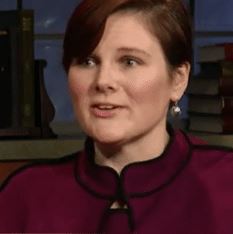
Alzheimer’s specialist Debi Buzanowski, executive director of Eddy Memory Care at Marjorie Doyle Rockwell Center in Cohoes, was featured in a Wall Street Journal story about the center’s work with the Lighting Research Center at Rensselaer Polytechnic Institute to study the effect of lighting on dementia patients.
From the story:
Sinai worked with the Rensselaer Polytechnic Institute in Troy, N.Y., which has a Lighting Research Center. Its director, Mariana Figueiro, an architect with a background in biology, helped design light fixtures for the randomized trial, which was funded by the National Cancer Institute. The fixtures can provide dim light or circadian-stimulating high-intensity light. Any type of light can affect circadian rhythms, Dr. Figueiro says, “as long as you develop the right spectrum [or color] and the right intensity.” Strong fluorescent lights could work, although people tend to prefer light-emitting diodes or LEDs.
Rensselaer’s Dr. Figueiro has been tinkering with light in elder-care facilities to ease Alzheimer’s patients’ agitation and sleep disorders. She says institutional lighting leaves much to be desired. “In hospitals, you have light 24 hours [a day] but really we need light during the day and no light at night when we are asleep,” she says.
…
Two years ago, Debi Buzanowski was an Alzheimer’s specialist at the Marjorie Doyle Rockwell Center in Cohoes, N.Y., during a study using lights from Rensselaer with some dementia patients. She recalls that one resident went from being a recluse to becoming far more engaged. In January, Ms. Buzanowski was appointed executive director and says revamping the lights is a priority.
Facilities are beginning to understand lighting’s effect on health, Dr. Figueiro says, giving rise to a new buzzword: “circadian light.”
Click here to see the full story.





